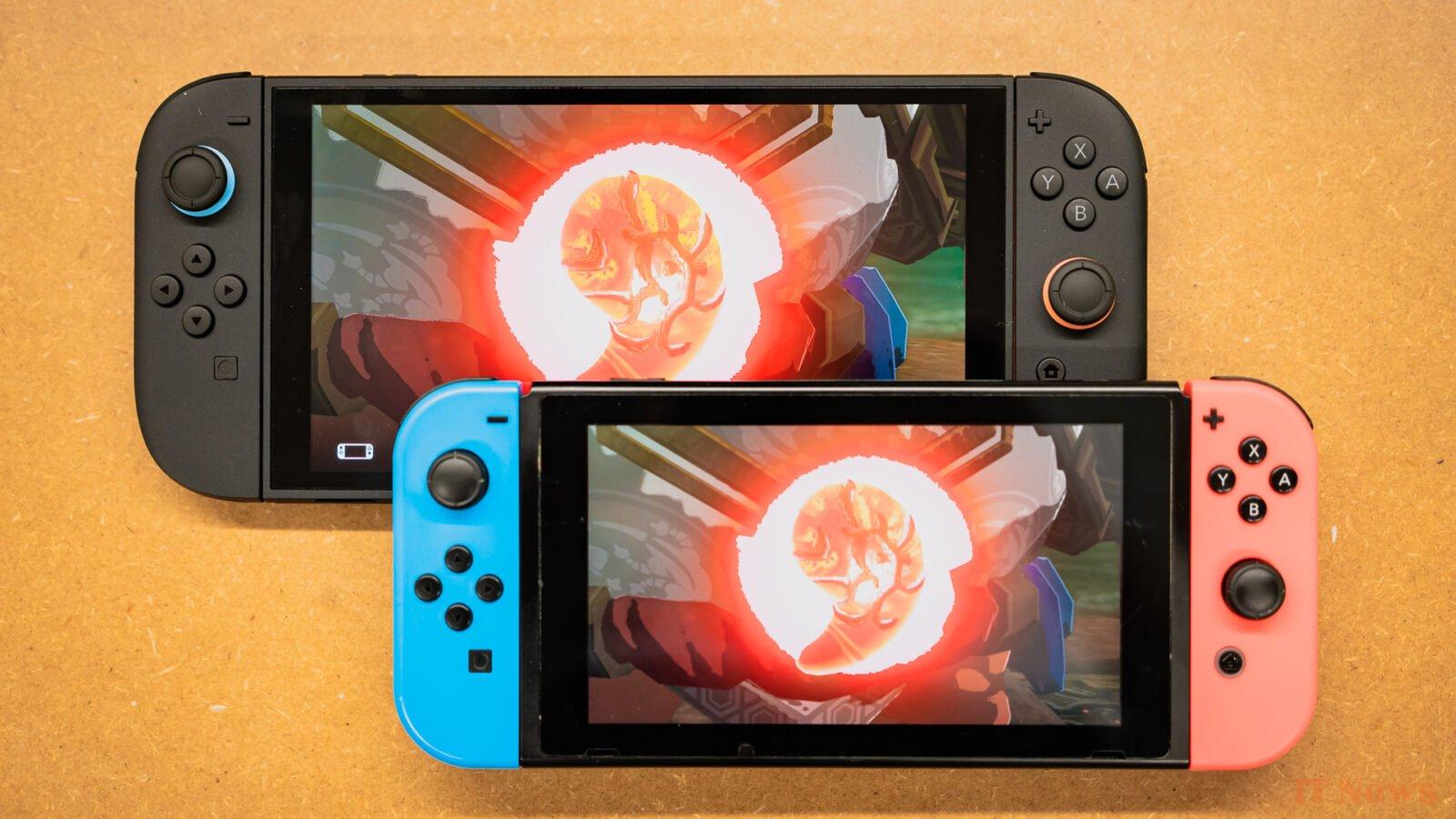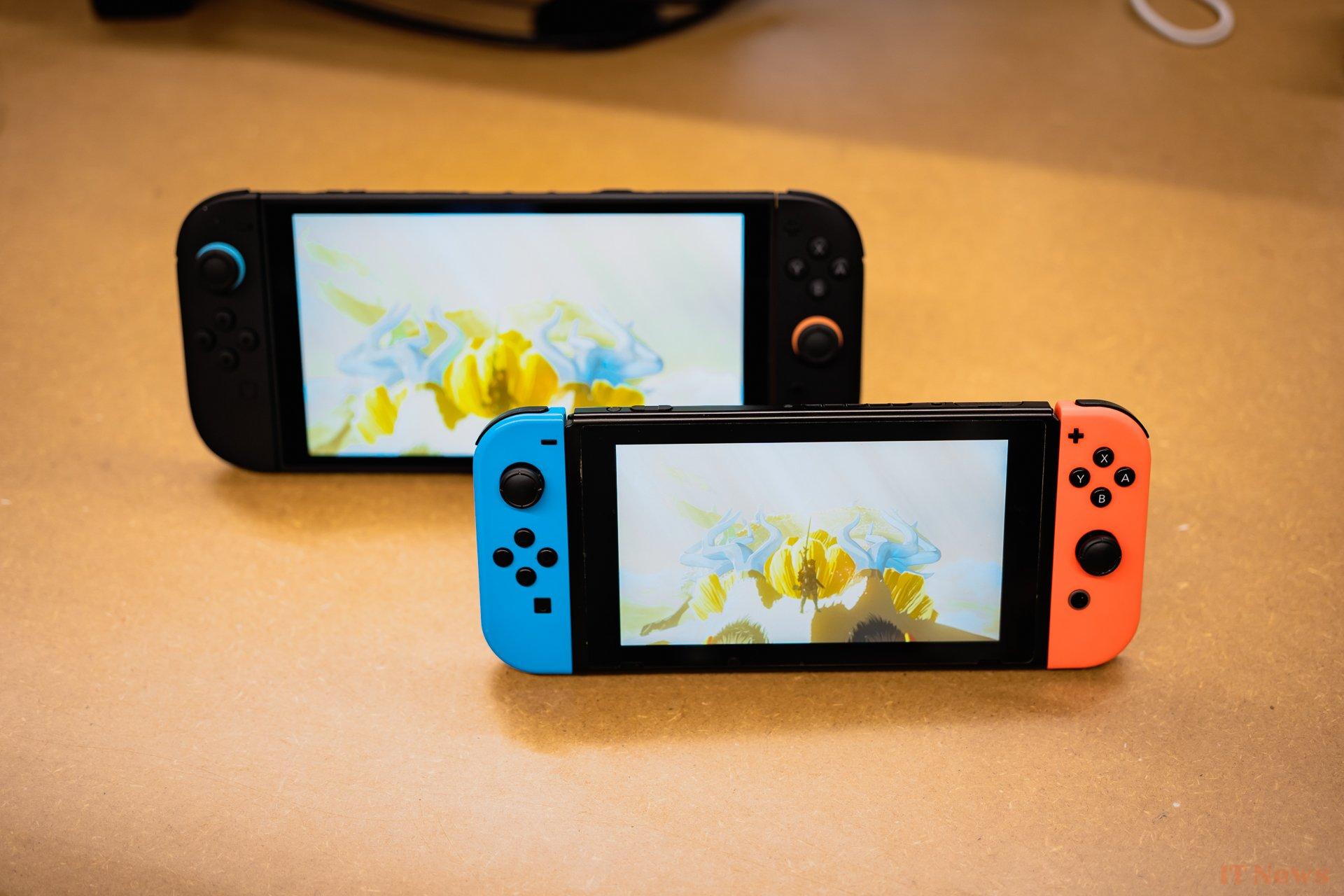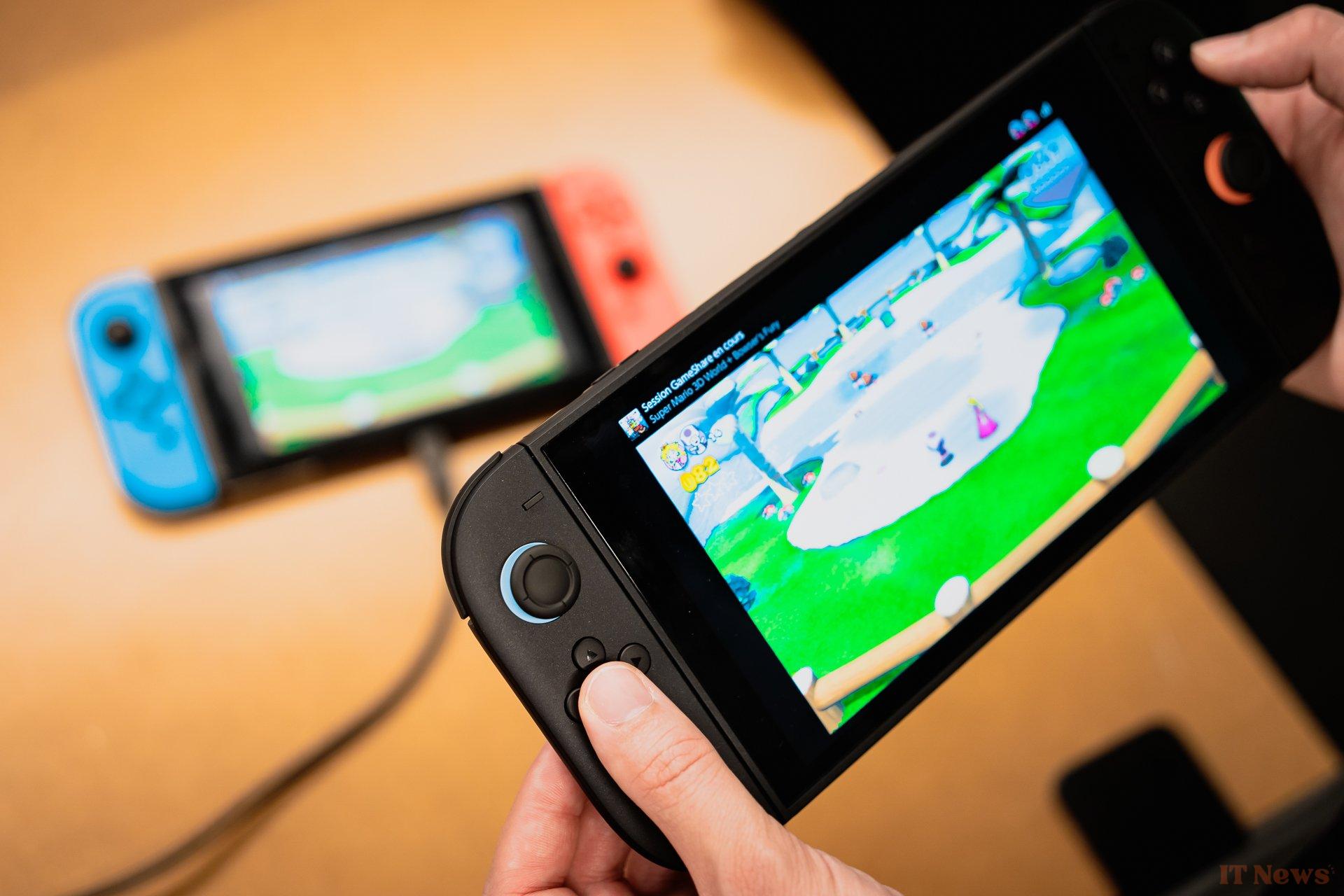We've had the Nintendo Switch2 in the editorial office for almost 48 hours. After testing a number of games, it's now time for the 01lab screen test. We put three different models under our microscope:
- The new Nintendo Switch2;
- The OLED Switch;
- The 2017 Switch V1.
Fans are shouting OLED
The subject of the Switch2 screen is particularly explosive among Nintendo fans, given that the Kyoto-based company has chosen an LCD screen for its new console. If you don't know much about screen technology, just remember that there are two main families of screens in the tech products we encounter every day: LCD or OLED. In many areas, such as smartphones, OLED is almost ubiquitous.
It is often preferred for its infinite contrast ratio and more vibrant colors. It is also appreciated by those used to playing in the dark, since each pixel of an OLED screen can turn off, offering perfect black pixels and therefore beautiful flat black areas in the image, where the LCD can give in to "blooming", a sort of halo effect which gives the impression that the black is not quite so.
This choice which we would describe as if not audacious, certainly controversial, motivates more than ever the writing of this article and the tests that we have carried out internally. Time for measurements!
| Switch 2 | Switch 1 | Switch 1 OLED bright fault | Switch 1 OLED standard mode | |
|---|---|---|---|---|
| Brightness on black background (in cd/m²) | 0.3252 | 0.347 | 0.02 | 0.02 |
| Brightness on white background (in cd/m²) | 360.65 | 330.16 | 341.8 | 339.57 |
| Min brightness (in cd/m²) | 2.398 | 2.035 | 1.916 | 1.914 |
| Contrast | 1109:1 | 951:1 | infinity | infinity |
| Gamma | 2.24 | 2.24 | 2.2 | 2.19 |
| Temperature (in K) | 7758 | 6961 | 6901 | 6865 |
| Delta E 2000 sRGB | 4.05 | 2.24 | 4.59 | 2.26 |
| Reflectance (in GU) | 102 | 200 | 136 | 136 |
The Switch2: slightly higher SDR brightness
Let's start with the brightness. At first glance, the Switch2 gives the impression of spitting out much more than its predecessor, the illustrious Switch from 2017. But in reality, once it's under our probe, we quickly realize that it only marginally improves the maximum brightness, measured in SDR, it should be noted.
We have 360cd/m² on the Switch2 side, a value slightly higher than the Switch1 with its 330cd/m². It's also slightly higher than the Switch OLED's SDR peak brightness, which is worth noting. With the addition of HDR on the Switch2's display, however, you should expect higher brightness peaks.
| Switch 2 | Switch 1 | Switch 1 OLED bright fault | Switch 1 OLED standard mode | |
|---|---|---|---|---|
| Brightness on black background (in cd/m²) | 0.3252 | 0.347 | 0.02 | 0.02 |
| Brightness on white background (in cd/m²) | 360.65 | 330.16 | 341.8 | 339.57 |
| Min brightness (in cd/m²) | 2.398 | 2.035 | 1.916 | 1.914 |
Let's move on to the minimum brightness. It's starting to get seriously high for the Switch2, reaching 2.395cd/m². Probably enough to be somewhat annoying in a pitch-black room or even force you to squint. That said, previous models, while better, didn't completely eliminate this risk with 2.035cd/m² for the Switch1 and 1.916cd/m² for the OLED.
The contrast ratio: the annoying detail
Let's move on to the big sore, the staining subject, the big thorn in the side of the new console: the contrast ratio. Because if there's one aspect where OLED outshines LCD, it's on this subject. Particularly on screens of inexpensive machines forced to make some savings on hardware.
| Switch 2 | Switch 1 | Switch 1 OLED default vivid | Switch 1 OLED standard mode | |
|---|---|---|---|---|
| Contrast | 1109:1 | 951:1 | infinity | infinity |
In practice, the minimum brightness of the Switch OLED screen is so low (around 0.02) that we equate its contrast ratio to infinity. As a reminder, a contrast ratio compares the whitest point on the screen to the blackest point.
The Nintendo Switch2 screen, for its part, displays a contrast ratio of 1109:1. This is better than the Switch1, which topped out at 951:1, but if we compare this figure to recently tested tablets, like the Lenovo Idea Tab Pro, which reached 1889:1, it is far from a breathtaking value.
Colors a bit off
Let's move on to color calibration. Let's start with the color temperature, which, as a reminder, cannot be adjusted on the Switch. The Switch2 is the Switch that leans most towards blue.
Generally speaking, it is recommended to aim for 6500K on the subject, since this brings the screen temperature closer to daylight. The Switch2 moves away from this happily and goes up to 7758K. This will rather flatter the retina while also moving the console away from a neutral rendering. On the other hand, we are not yet at a level that could cause greater eye fatigue or compromise color fidelity too significantly.
| Switch 2 | Switch 1 | Switch 1 OLED default vivid | Switch 1 OLED standard mode | |
|---|---|---|---|---|
| Temperature (in K) | 7758 | 6961 | 6901 | 6865 |
| Delta E 2000 sRGB | 4.05 | 2.24 | 4.59 | 2.26 |
The Switch 2, however, has a relatively high Delta E 2000 sRGB, at 4.05. In everyday English, this means that the difference between the colors the screen is supposed to display and those it actually displays is significantly deviating. At 4.05, the Switch 2 remains within the acceptable range, but it is far from an average delta E of 3, the level at which it is customary to say that the human eye no longer sees the drift.
However, how does the Switch 2 compare to its predecessors? The Switch 1 has a much better Delta E 2000 sRGB, at 2.24. It is therefore more accurate. The OLED Switch is a bit special because it offers two color modes and therefore leaves the choice to the user. In the default, most vivid mode, the Delta E 2000sRGB is worse than that of the Switch 2, 4.59. On the other hand, the OLED Switch makes up for it in its "standard" mode with a nice 2.19.
Reflectance: the best of the Switches
Let's finish with a point that concerns not only the screen, but also the coating and the glass that covers it: brightness, also called reflectance.
| Switch 2 | Switch 1 | Switch 1 OLED default vivid | Switch 1 OLED standard mode | |
|---|---|---|---|---|
| Reflectance (in GU) | 102 | 200 | 136 | 136 |
In our measurements, we found a significantly lower reflectance on the Switch2 than on the OLED, with a value of 102GU compared to 136GU. In general, Tech products around 100GU are considered to have a very acceptable reflectance. We can clearly see how far we have come since the Switch1, which reached 200 GU.
This difference can also be seen with the naked eye. Since our premises are equipped with neon lights, you just have to place the three consoles under one of the lamps to see that the halo reduces as you move through the generations of Switch. A good point for using it outdoors or in an environment





0 Comments